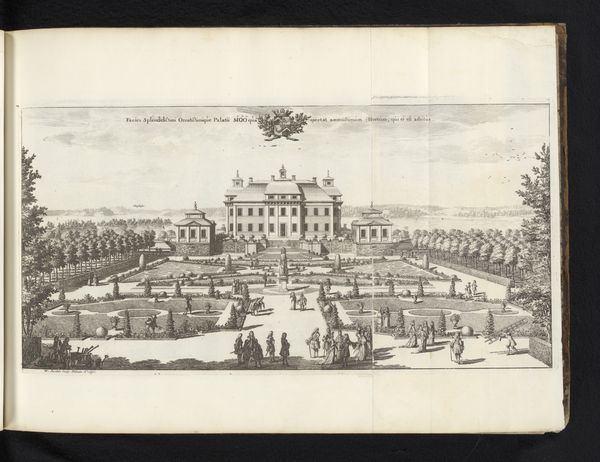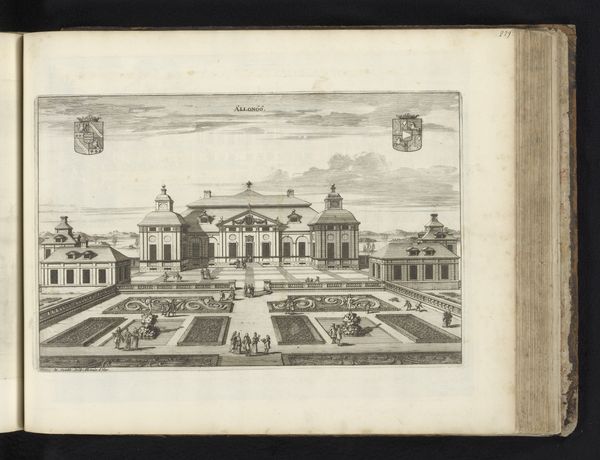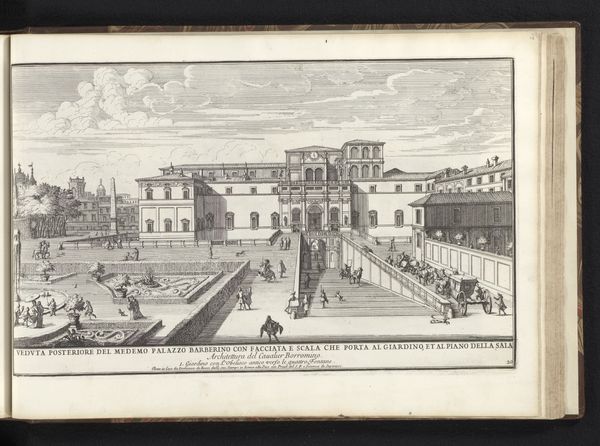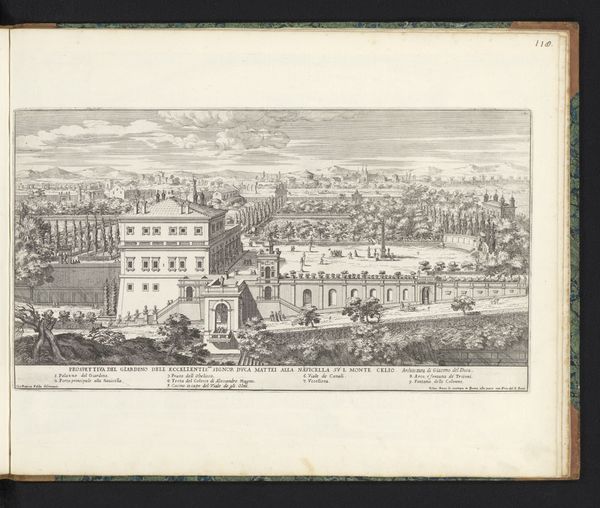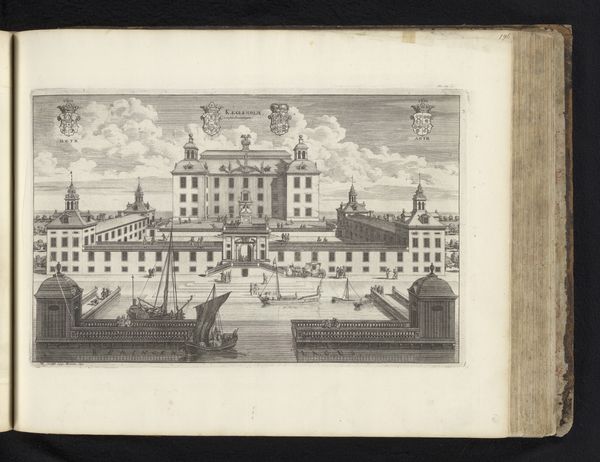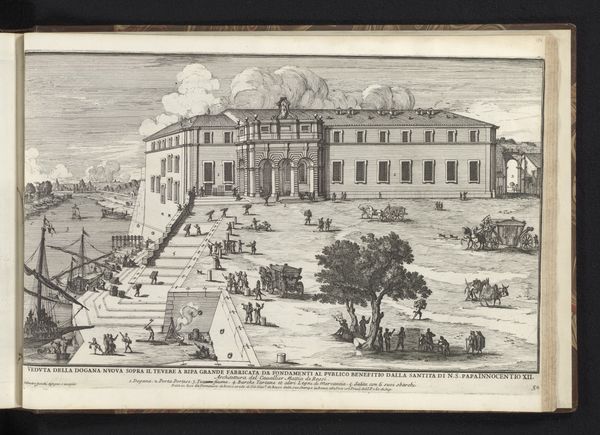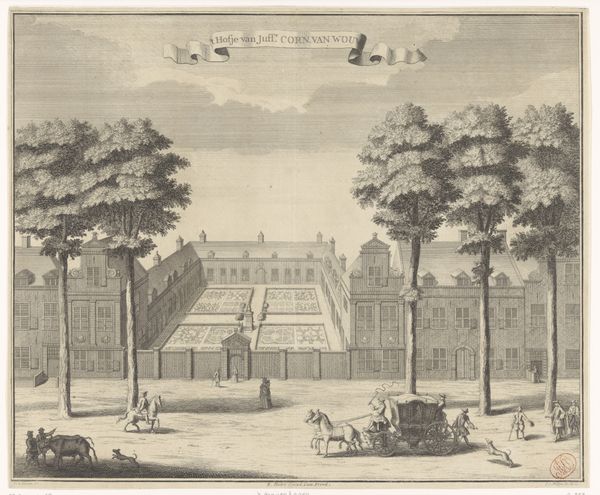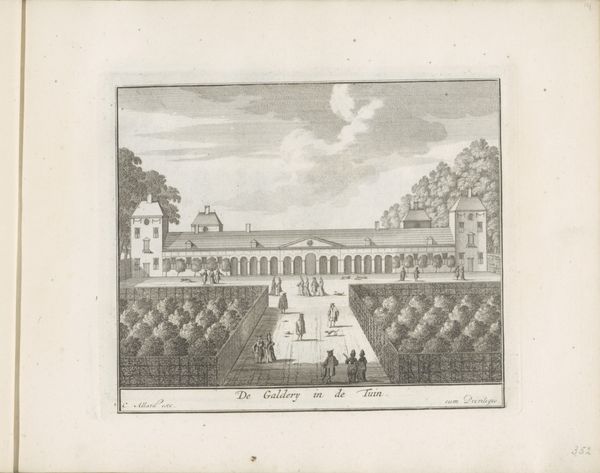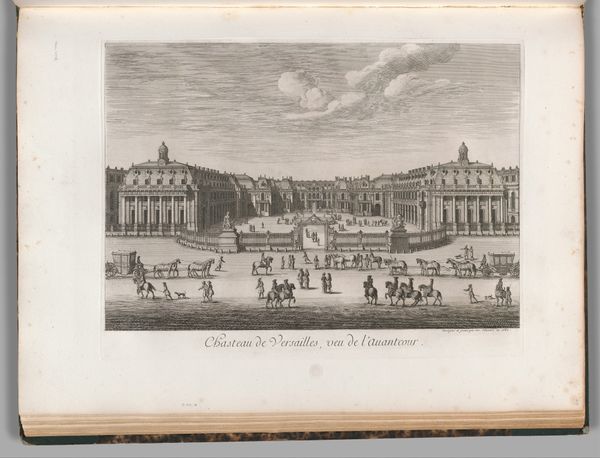
Altra Vedvta in Prospettiva del Teatro et Giardino Contigvo di Mondragone in Frascati (...), from 'La Fontane di Roma nelle Piazze e Luoghi Publici (...)', part 2, 'Le fontane delle ville di Frascati' (plate 18) 1691
0:00
0:00
drawing, print, engraving, architecture
#
drawing
#
baroque
# print
#
landscape
#
cityscape
#
engraving
#
architecture
Dimensions: Plate: 9 1/16 × 13 11/16 in. (23 × 34.7 cm)
Copyright: Public Domain
Curator: This engraving, dating back to 1691, presents a detailed view of the Teatro and Giardino at Mondragone in Frascati, and it's part of a larger series focusing on Roman fountains by Giovanni Battista Falda. The precision of line is exquisite. Editor: My immediate impression is one of controlled grandeur, almost to the point of feeling sterile. There's a certain regimentation in the landscaping, a desire to tame nature. The engraving's scale emphasizes this rigid geometry. Curator: It's true. Baroque gardens like this served as visible demonstrations of power and control, and the artist's depiction of the social milieu and status is as fascinating as the hard stone of its structures. Wealth on display is at every single point. Consider also the architectural layout reflecting prevailing notions of hierarchy and social order. The elites literally looked down upon the rest. Editor: Absolutely. You can see that labor is being poured into the careful execution of the gardens. The materiality of the fountains, the pathways, every square inch. It reflects significant human input, an intention to manifest power via the shaping of stone, water, and earth. There’s a transformation of base material through human effort. Curator: And think of the intersectionality of labor here – the social stratification of the workers who made this landscape a reality versus the elite class strolling through it. Class, certainly, but also how gender factors into access and leisure. Editor: That division of labor underscores how these spaces weren't just aesthetically pleasing. They functioned to display wealth and status through manipulated matter and physical exertion by many to satisfy the tastes of few. Curator: Exactly, it wasn't merely about aesthetics, but a material representation of an extremely unequal social dynamic – with fountains and gardens playing a starring role. Considering our contemporary understanding, perhaps it allows us to engage in discussions about social justice through what we may view as an outdated architectural symbol. Editor: Ultimately, this piece makes me consider the physical embodiment of social imbalance, and the legacy it casts on the built environment we navigate to this day. Curator: For me, seeing such meticulously crafted spaces always raises important questions about the intersection of art, power, and the often-overlooked stories of the people behind the materials.
Comments
No comments
Be the first to comment and join the conversation on the ultimate creative platform.
